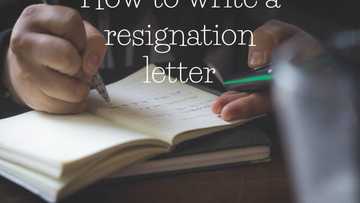How to write a formal letter (with samples)
Time changes and means of communication change too. We do not need to use a piece of paper and a pen to write a letter. Today, it is enough to use your laptop or a mobile phone to create a text and send it directly from your device. Despite such noticeable changes in the process of sending letters, writing rules remain unchangeable. The classic rules of writing formal letters are fundamental . Not all people know these rules. So if you are interested and want to know how to write a formal letter in both – digital and handwritten forms, go on reading.

Source: UGC
There are various reasons why people write formal letters. It may be a request, an invitation, a transmittal letter (send with CV), appreciation, congratulation or even a complaint. Everybody knows that there is no need to write such letters or emails with sophisticated vocabulary to family and friends. Therefore, sending a formal letter, you demonstrate respect and courtesy, underlining your exceptionally business interest.
What is a formal letter format?
Below, the format of a formal letter is given so that you could understand its structure. While writing your message, you can follow the succession offered in our article.
1. The first step is quite easy – start from the date.
2. In case if you are writing a handwritten variant, add the sender’s address on the top right-hand corner of the page. Then leave some space and add the receiver’s address.
3. If you are writing an e-mail, then write information about a recipient under the date. It may include name, position, company, and address.
4. Add the topic of your letter for the commodity. For example, “Job interview request.”
5. Be sure to greet a person you write to. One has to be polite and not very personal at the same time. If you know the name of an addressee, you can use “Dear Sir/Madam X”, “Dear Prof Smith”, etc. But never address by the first name only! You can resort to a full name or only last name. In case if you do not know the name, use “To Whom It May Concern”.
6. Formulate the subject of your letter. It must be a concisely formulated purpose of your text. For example “I am writing you to announce…” or “I am writing you regarding…”

Source: UGC
7. The next step is the body of your text. Skip a line after the introduction and start writings the main body. State your business logically and coherently. Remember that it is an essential part of your letter. Your request or main details of complaint and invitation must be concentrated here.
8. Skip a line again and go to closing part. Keep in mind that you should capitalise only the first letter of the closing line. You may use the following patterns:
- Sincerely yours
- Yours respectfully
- Best regards
- Yours truly
9. Add a comma, leave some space below, and write your full name. You may also indicate contact information. In a handwritten letter, you may add a signature too.
10. The last optional step is postscript (P.S.) It may contain additional brief information that has not been mentioned in the body. P.S. is a good thing for a handwritten paper as long as you can add something you have forgotten to mention, avoiding correcting. In emails, one may edit the text and just add the info in the body.
When your letter is ready, proofread it and be prepared to send it by post or using email.
How to write a formal letter with examples?

Source: UGC
READ ALSO: How to write an informal letter
The structure of all formal letters are approximately the same; only the subject will differ. Check the examples listed below that also can become handy:
- An online example of a complaint letter
- An online example of the letter of appreciation
- An online example of the letter of invitation
What are the essential tips for writing a formal letter?
While writing a formal letter, keep in mind several simple, but essential tips that will make your text look better:
- The content of a letter should be of high quality and proved either from personal experience or from reliable sources. In other words, do not speak about rumours or unimportant facts.
- A letter should look finished. There must be an introduction, the main body with the issue itself and conclusion. Express in the conclusion what you want from a person (you want to ask him or her about something, invite somewhere, etc.).
- You should exclude any rudeness and use a maximally neutral tone.
- Avoid the use of slang.
- Use sophisticated vocabulary: enquire (but not ask), reserve (but not book), verify (but not check), provide (but not give), assist (but not help), etc.
- Abbreviations of words are undesirable.
- Use passive voice not to sound subjective.
- Try to demonstrate the lack of emotional evaluation (use only facts).
- In case if you write a paper letter, avoid blots, and corrections.
Now you know how to write a formal letter. Even though a majority of people do not write formal letters every day, it is an important skill that may be required abruptly. Just follow the instructions given above, and you will succeed at this challenge.
READ ALSO: How to write an application letter for a teaching job in a secondary school
Source: Legit.ng







